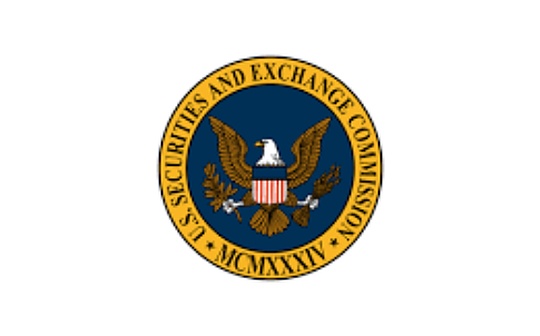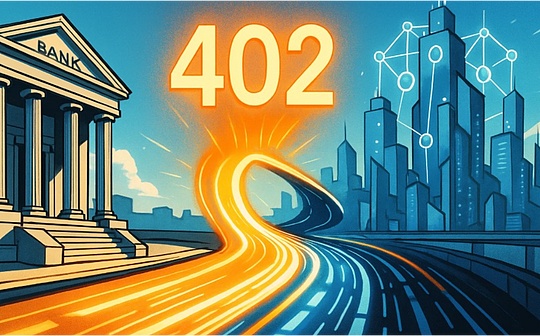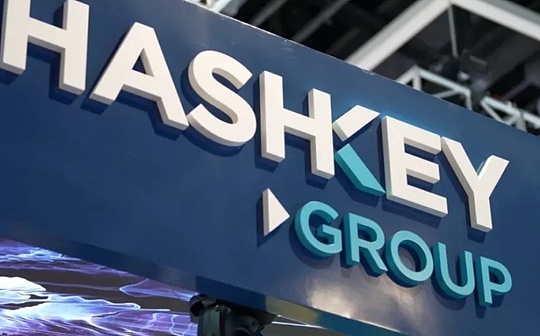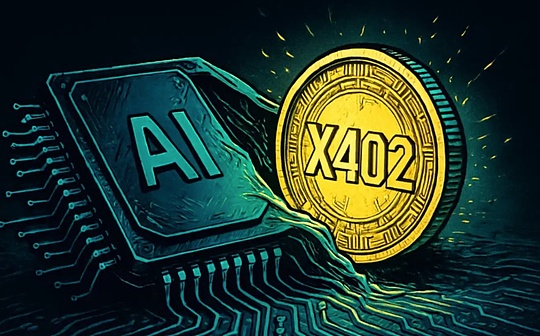
Author: Scott Walker, Chief Compliance Officer, a16zcrypto; Bill Hinman, consulting partner of a16zcrypto, former director of the company’s finance department of the US SEC; Translated by: 0xjs@Bitchain Vision
With the development of technology, the US SEC must also develop accordingly.This is especially true in the cryptocurrency space.New leadership and the establishment of a new cryptocurrency task forceIt provides the institution with an opportunity to take meaningful action and adapt.
Now is the time to take action: the crypto asset market is growing in size and complexity, so the recent practices of harmful enforcement and abandonment of regulation by the U.S. SEC need urgent updates.As professional investment services begin to operate within this new industry, there is no other way to promote market efficiency, encourage innovation and ensure investor protection is adopted.The basic principles of relevant securities laws—disclosure, fraud prevention and market integrity—should remain inviolable.However, applying these principles in a way that reflects the unique characteristics of crypto assets requires targeted regulatory changes.
This article proposes immediate, easy-to-implement adjustment measures that the U.S. SEC should take to develop regulations that are appropriate for purpose without sacrificing innovation or critical investor protection.While legislation is necessary to provide adequate regulatory clarity on crypto asset classification and secondary market supervision, these measures will bring direct benefits to the market.
1. Provide explanations on “airdrops” and other incentive rewards
The U.S. SEC should provide explanatory guidance on how blockchain projects distribute crypto assets to participants, rather than being considered a securities offering.These distributions are often referred to as “airdrops” or “incentive-based rewards” that blockchain projects usually make these distributions for free, or at a minimum value as rewards for previous use of a particular network or ecosystem.Such distributions are a key tool to enable blockchain projects to build communities and gradually decentralize them as they disseminate ownership and control of projects to their users.
How many benefits does this decentralization process have.Decentralization protects investors from risks often associated with securities and centralized controls and promotes the expansion of the network, thereby increasing its value.If the US SEC provides guidance on distribution, it will block the trend of issuing airdrops and incentive rewards only to non-Americans—a trend that is actually transferring ownership of blockchain technology developed in the United States overseas and at the expense ofThe interests of American investors and developers create huge profits for non-Americans at the cost of their interests.
what to do:
-
Establish eligibility criteria: Set benchmark standards for crypto assets eligible for exemption from securities law investment contract processing in airdrops and incentive incentive allocations.For example, if the market value of the crypto assets comes primarily from (or reasonably expected to mainly come primarily from) any programmatic functionality of a distributed ledger or similar technology, or any executable software deployed to a distributed ledger or similar technology, and these crypto assets were not originallySecurities shall be eligible for such distribution.
2. Modify the crowdfunding exemption issuance rules
The U.S. SEC should amend crowdfunding regulatory rules to more effectively regulate the issuance of exemptions for crypto assets.
The current restrictions on financing and investor participation in crowdfunding activities are not suitable for cryptocurrency startups, as they often require the wider distribution of crypto assets in order to develop critical scale and network effects for their platforms, applications, or protocols.
what to do:
-
Expand issuance limits: Raise the maximum amount raised through crowdfunding to a level consistent with enterprise demand (for example, up to $75 million or a percentage of the entire network, depending on the depth of disclosure).
-
Issues of exemptions: Allows crypto projects to rely on exemptions similar to Rule D while leveraging the accessibility of crowdfunding platforms to reach investors beyond qualified investors more widely.
-
Protect investors: Take appropriate protective measures, such as limiting the amount of individual investments (as Reg A+ currently does) and strict disclosure requirements, covering important information related to cryptocurrency investments – something not covered by current regulations.(For example, while issuance disclosures usually involve matters such as directors, their compensation and shareholding details, disclosures about underlying blockchains, their governance and consensus mechanisms may be more important for crypto asset investors.) Based on digital asset investmentThese requirements are tailored to ensure that they are fully informed and protected from fraud.
These changes will allow early crypto projects to reach a wide range of investors, while maintaining transparency while democratizing promising investment opportunities.
3. Enable brokerage dealers to operate crypto assets and securities
The current regulatory environment limits the meaningful participation of traditional brokerage dealers in the crypto space—mainly because it requires brokers to obtain separate approvals to trade crypto assets and imposes on brokerage dealers who want to host crypto assets.More cumbersome supervision.
These restrictions place unnecessary barriers to market participation and liquidity.Allowing brokerage proprietors to promote the trading of securities and non-securities crypto assets will enhance market functions, investor access and investor protection.It will also recognize that crypto assets that are obviously not securities (such as Bitcoin, Ether, or fiat-based stablecoins) on today’s crypto platforms can be seamlessly traded with crypto assets that the SEC might consider to be bound by securities laws.
what to do:
-
Allow registration: Develop a clear pathway for broker dealers to register trading (and custodial) crypto assets (securities and non-securities) and develop custom requirements that reflect the nature of these assets.
-
Strengthen regulatory framework: Establish supervision mechanisms to ensure compliance with anti-money laundering (AML) and understanding your customer (KYC) regulations and maintain market integrity.
-
Cooperation with the industry: Cooperate with the Financial Industry Regulatory Authority (FINRA) to release joint guidance to address operational risks unique to crypto assets.
This approach will promote a safer and more efficient market, allowing brokerage dealers to bring their expertise in optimal execution, compliance and custody to the cryptocurrency market.
4. Provide custody and settlement guidance
Custody and settlement remain key barriers to institutions’ adoption of crypto assets.The ambiguity of regulatory processing and accounting rules has hindered traditional financial institutions from entering the custody market.This means that many investors cannot get investment returns from trust asset management, but can only invest and arrange their own custody alternatives.
what to do:
-
Tailored custody guidance: Provide guidance on custody rules under the Investment Advisor Act to clarify how investment advisors custody crypto assets and ensure adequate safeguards are taken, such as multi-signature wallets and secure off-chain storage.This should also include guidance on voting for pledges of idle assets and governance decisions on crypto assets custodialized by investment consultants.
-
Set settlement standards: Develop specific guidance on crypto transaction settlement, including timetables, verification processes and error resolution mechanisms.
-
Establish a technology-neutral framework: allows innovative managed solutions that meet regulatory standards to be flexible without imposing specified technical requirements.
-
Correct accounting treatment: Abolish the US SEC Employee Accounting Notice 121, allowing accounting for custodial digital assets to reflect the nature of the custodial arrangements rather than presumptive liability.The background is that SAB 121, among other things, states that “as long as [a company] is responsible for protecting crypto assets held by its platform… the company should present liabilities on its balance sheet to reflect its obligation to protect itThe crypto assets held by platform users” and list the corresponding assets.The overall effect of SAB 121 is to transfer custodial crypto assets to the custodian’s balance sheet—a practice that goes against the traditional accounting treatment of custodial assets.Therefore, unlike a typical custody arrangement, if the custodian goes bankrupt, this accounting treatment may result in dragging the custodial crypto assets into the custodian’s bankruptcy property.The worst possible is that SAB 121 lacks legitimacy.The Government Accountability Bureau found that this is actually a rule that should be submitted to Congress for review under the Congressional Review Act, and in May 2024, the House and Senate issued a joint resolution that rejected SAB 121, but the resolution was worshippedPresident Deng rejected it.
This clarity will lay the foundation for institutional confidence, enabling large players to enter the market while improving market stability and competition among service providers.In addition, cryptocurrency investors, whether retail investors or institutional investors, will receive protections related to professional, regulated asset management services.
5. Reform the ETP standard
The US SEC should adopt exchange-traded products (ETP) reform measures that promote financial innovation.These proposals will provide broader market access to investors and trustees accustomed to managing their ETP portfolios.
what to do:
-
Recovering market size test: The US SEC relies on “Winklevoss test” to develop market oversight protocols, which delays approval of Bitcoin and other cryptocurrencies-based ETPs.The test requires that for national stock exchanges such as the New York Stock Exchange or Nasdaq, to trade commodity-based ETPs, listed exchanges must sign with a “regulated market of considerable size” of the commodity or its derivatives.Supervision agreement.Given that the US SEC does not consider crypto trading platforms to be a “regulated market”, this functionally means that ETP can only exist in crypto assets that have futures markets (regulated by the Commodity Futures Trading Commission) that are targeting commodities.Price findings are significantly high predictive.This approach ignores the size and transparency of the current crypto market.More importantly, it creates arbitrary distinction in the criteria applicable to cryptocurrency-based ETP listing applications and all other commodity-based listing applications.Therefore, we recommend restoring historical tests of considerable markets: only require sufficient liquidity and price integrity in the commodity futures market to support ETP products.This adjustment will align the approval of encrypted ETP with standards applicable to ETPs for other assets.
-
Implement physical settlement: Allows encrypted ETP to be settled directly in the underlying assets.This will lead to better fund tracking, lower costs, improve price transparency and reduce dependence on derivatives.
-
Implement custody standards: Implement strict custody standards for physical settlement transactions to reduce the risk of stolen or lost.Additionally, an ETP idle asset pledge option is provided.
6. Implement 15c2-11 authentication for coins listed in alternative trading systems
In a decentralized environment, the issuer of a crypto asset may not play any important and ongoing role, so there is a question of who should be responsible for providing accurate disclosures about the asset.Fortunately, there is a useful similar rule in the traditional securities market, namely Article 15c2-11 of the Exchange Act, which allows brokers to trade securities as long as there is the latest information on securities available for investors to obtain, etc.
Expanding this principle to the crypto asset market, the US SEC can allow regulated crypto trading platforms (including exchanges and brokers) to trade any assets as long as the platform can provide investors with accurate and up-to-date information.As a result, these assets will be more liquid in the U.S. SEC-regulated market, while ensuring investors can make informed decisions.Two obvious benefits of this are the ability to trade digital asset pairs (one of which is securities and the other is non-security assets) in the US SEC-regulated market, as well as inhibiting trading platforms from operating overseas.
what to do:
-
Simplify the certification process: Establish a simplified 15c2-11 certification process for crypto assets listed on the Alternative Trading System (ATS) platform and force disclosure of the design, purpose, function and risks of the asset.
-
Adopt due diligence criteria: Exchange or ATS operators are required to conduct due diligence on crypto assets, including verification of issuer identity and important feature and functional information.
-
Clear disclosure requirements: Regular updates are required to ensure that investors receive accurate information in a timely manner.In addition, it is clear when the issuer no longer needs a report because due to decentralization, reports are no longer of reference value to potential buyers.
The framework will promote transparency and market integrity while allowing innovation to thrive in a regulated environment.
in conclusion
The U.S. SEC is at a critical moment in deciding the future of crypto asset regulation.The establishment of a new crypto task force shows that the U.S. SEC intends to change the course of the previous administration.By taking the key measures mentioned above, the U.S. SEC can begin to get rid of its historically controversial focus of law enforcement and add much-needed regulatory guidance and practical solutions to investors, trustees and financial intermediaries.This will better balance the relationship between protecting investors and promoting capital formation and innovation.
Changes in the above proposals—from modernizing crowdfunding rules to setting clear standards for custody and ETP—will reduce ambiguity and support financial innovation in the field.Through these adjustments, the U.S. SEC can re-establish its purpose and reposition itself as a forward-looking regulator, ensuring that the U.S. market remains competitive while protecting the public.The long-term future of the U.S. crypto industry may require Congress to provide a comprehensive, purpose-friendly regulatory framework.However, until the framework is in place, the steps outlined here are just one way to achieve proper regulation.








